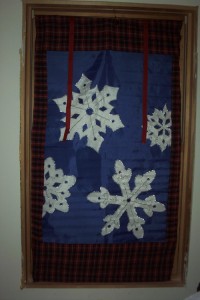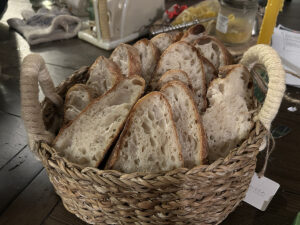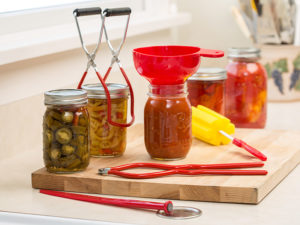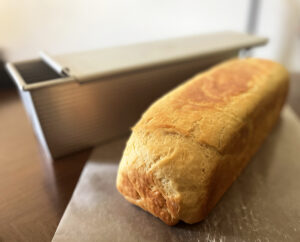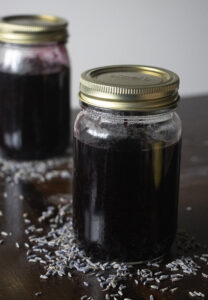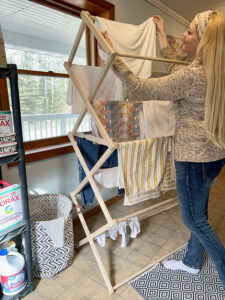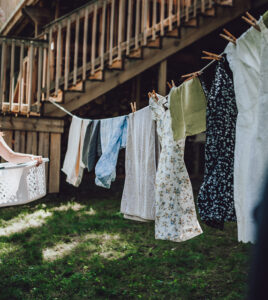 Editor’s Note: This is one of the most popular posts in the history of our blog. Re-sharing the information – hopefully it helps you in 2018!
Editor’s Note: This is one of the most popular posts in the history of our blog. Re-sharing the information – hopefully it helps you in 2018!
Instant insulation for (about) $20!
When I was little and my grandfather was building our home “up in the sticks” of rural Massachusetts, we lived in three rooms plus an enclosed porch while the second phase was being added onto the back. It would become another two bedrooms and a bathroom, but for one winter I recall, it was enclosed but not insulated or finished, so an army surplus blanket hung in the roughed-in doorway at one back corner of the kitchen.
Even in the finished part of the house though, my grandmother noticed that sitting next to a window, though it were near a heat source, felt cold even though the windows had been installed tightly and well caulked.
Here in the stormy mid-Atlantic coastal region, storms called Nor’easters are some of the most formidable things you can imagine where potential for losing heat during the winter is concerned. Now, granted, this was the early 1950s and the closest thing anyone had to double-pane glass was a regular single-pane window with a storm window fitted on the outside during winter. Fast forward to the high-quality windows I paid dearly for in my new home, and I still noticed last year during our first winter here, that there was a noticeable difference in temperature when I held my hand close to the glass.
I recalled that my grandmother had solved the worst of the problems in that little cottage with old blankets and quilts, safety-pinning them at first, and then later folding over the tops and sewing them, so they’d hang from a curtain rod, and then rolling them up and tying them during the day to let in the light. An online search yielded a whopping $300 price for one custom window quilt. So, I decided to do what I always do when I want something I either can’t afford or aren’t willing to part with the cash for: make it myself.
How To Make Your Own Window Quilts
If you have experience sewing and/or quilting, you’re ahead of the game – I’m going from square one here for those who are new to it, or who might even have to find a way to fudge some of the steps.
The most effective for heat retention is an inside-mounted rod; that is, a spring-tension rod that is adjusted so it pushes against the opposing inside frames around the window, and the quilt hangs right close to the glass rather than out a few inches and down over the windowsill the way typical draperies are hung. The reason for this is simple physics: heat rises, cold air sinks, and if you have a surface-mounted curtain standing out a few inches from the wall, the air that is chilled by its proximity to the glass will sink right down behind the curtain, over the sill and into your room. The fact that it’s curved back into the wall and hugs the sides may make it look snug, but put your hand a couple inches below the hem and you’ll see what I mean.
Now, let’s use my window as an example for measurements: 39″ wide by 60″ long. I want my window quilt to be as close to this as I can get it or even a little larger so it actually gets “tucked in” a bit. I’ll aim for a finished size of 39″ wide by the 60″ length, plus an extra 4″ to fold over at the top for a curtain rod channel. I set myself a budget of $20 for the whole project.
In spite of having no time for piecing a quilt block, I do like the idea of some kind of seasonal pattern, and I pictured snowflakes on a dark background. A visit to the local craft store yielded just the thing – a nylon, seasonal outdoor banner with a pattern very close to what I had in mind- for $7.99. The flag only measures 28″ by 48″ however, so I’d have to come up with fabric to sew along both sides as well as top and bottom. It’s a shame it didn’t match the length exactly, as having a channel already sewn into the top for the flagpole would’ve saved me a lot of time; but it’s a lively thing with glittery edges on large white flakes that I’m pleased with.
A search of my sewing supplies rendered nothing I could use for the edging, although I did have an old sheet with a tear that would suffice for the backing. Armed with the $12.01 I had left of my twenty, I scoured the fabric store until I found a flannel plaid I liked in blue, red and gray, as well as a small package of thin, unwoven synthetic batting. A package of wide, red cotton seam binding would make nice ties and I left the fabric store smiling smugly to myself, admiring my receipt for $11.51 – I had brought my project in 50 cents under budget.
 To start, I cut strips to go across both top and bottom that would make up the length plus the 4″ to fold over for the channel; and then did shorter, narrower strips to make up with width. There wasn’t space to set up my sewing machine for this part, and the seam along the sides of the banner was pretty thick, so I tried some fabric glue. I used a brand called Tear Mender, but I’m sure any washable fabric glue would work. After that came cutting and fitting the batting to the back of the banner and fabric “quilt top.” I pinned it so the edges of the fabric overlapped the batting a little and then ran a line of stitching along it. The batting I had purchased was a bit shorter than the full length of the window, so I left the “unbatted” part (is there such a word?) for the top so the full insulation would come down to the bottom of the window.
To start, I cut strips to go across both top and bottom that would make up the length plus the 4″ to fold over for the channel; and then did shorter, narrower strips to make up with width. There wasn’t space to set up my sewing machine for this part, and the seam along the sides of the banner was pretty thick, so I tried some fabric glue. I used a brand called Tear Mender, but I’m sure any washable fabric glue would work. After that came cutting and fitting the batting to the back of the banner and fabric “quilt top.” I pinned it so the edges of the fabric overlapped the batting a little and then ran a line of stitching along it. The batting I had purchased was a bit shorter than the full length of the window, so I left the “unbatted” part (is there such a word?) for the top so the full insulation would come down to the bottom of the window.
 Next, the sheet was pressed flat and fitted to the back of the quilt in such a way that a narrow bit of the finished fabric showed along the edge and again, pinned, and stitched.
Next, the sheet was pressed flat and fitted to the back of the quilt in such a way that a narrow bit of the finished fabric showed along the edge and again, pinned, and stitched.
 Last, a hem can either be done with artful, hidden stitches, or a neat line of machine stitching along the bottom and top; and then a channel for the curtain rod made by lapping the top over and stitching it like a conventional curtain panel. Let down for the night, our snowflake quilt goes with nothing in the room, but is still a far cry from the pastel baby quilts that stood in contrast to the wood axe by the back door in my grandparents’ place.
Last, a hem can either be done with artful, hidden stitches, or a neat line of machine stitching along the bottom and top; and then a channel for the curtain rod made by lapping the top over and stitching it like a conventional curtain panel. Let down for the night, our snowflake quilt goes with nothing in the room, but is still a far cry from the pastel baby quilts that stood in contrast to the wood axe by the back door in my grandparents’ place.
Rolled up and tied, it will let in sunlight or moonlight, as outdoor temperatures dictate.
 If you’re in such a cold area that you hate even uncovering the windows completely during daylight hours, consider mounting a second spring-tension rod with a short “valance” length quilt on the lowest quarter of the window. This will allow you to look out and receive any sunlight that may come in during the day without allowing cooler air to slide down into the room. At night, the top quilt gets unrolled and tucked behind the lower one. I particularly like this idea for the window over my kitchen sink, where the views of deer, birds and the woods behind the house are too precious to give up entirely during the coldest months.
If you’re in such a cold area that you hate even uncovering the windows completely during daylight hours, consider mounting a second spring-tension rod with a short “valance” length quilt on the lowest quarter of the window. This will allow you to look out and receive any sunlight that may come in during the day without allowing cooler air to slide down into the room. At night, the top quilt gets unrolled and tucked behind the lower one. I particularly like this idea for the window over my kitchen sink, where the views of deer, birds and the woods behind the house are too precious to give up entirely during the coldest months.
Last but hardly least, I’m sure it’s clear that if either your access to a fabric store or the funds to make this project are a problem, look for things you can substitute, even if only temporarily. The satisfaction of cutting heat loss, blocking drafts and noticing a difference in your heating bill can go a long way toward excusing a bedroom window graced by a beach towel.
Look at your doors as well, and consider mounting a rod over the top inside any that do not have a storm door or vestibule. A “quilt” like this will come down to the floor and serve the same purpose as doorway draperies have in the British Isles for ages. Happy heating!
Editor’s note: This post was first published in 2007.


